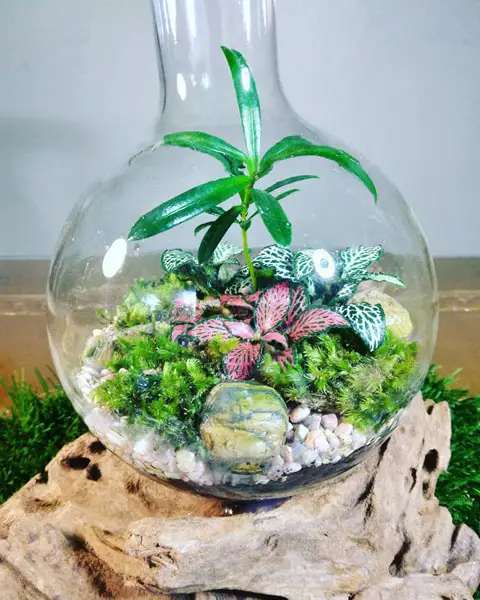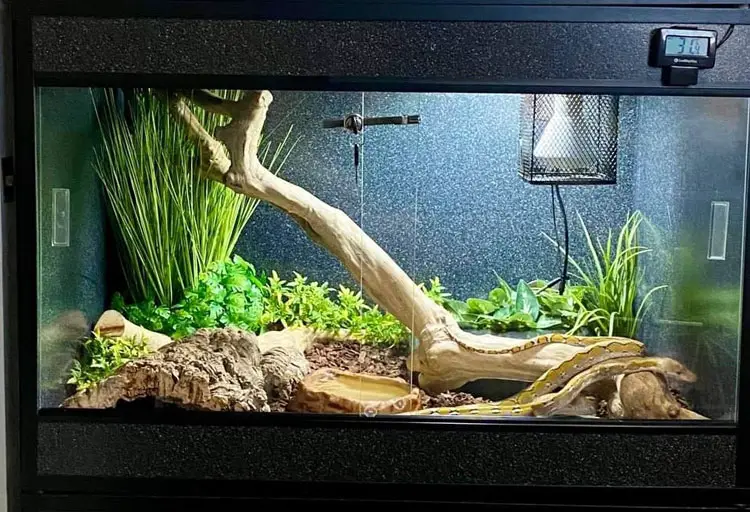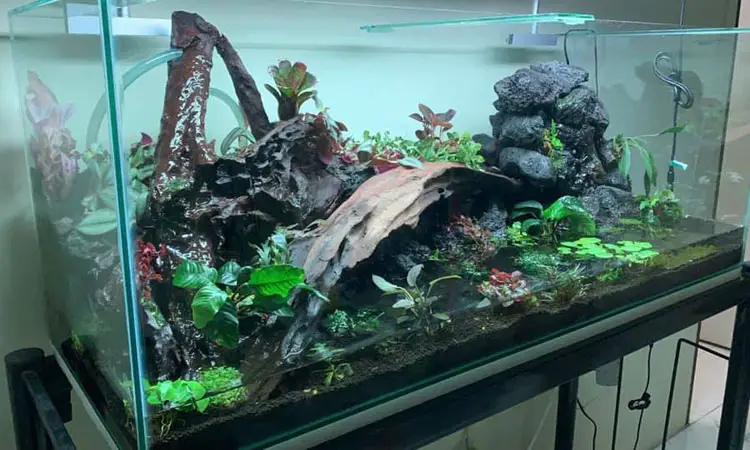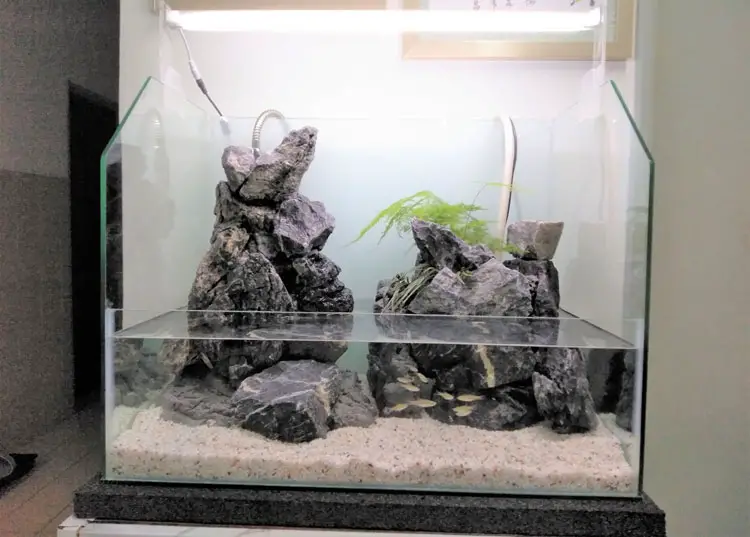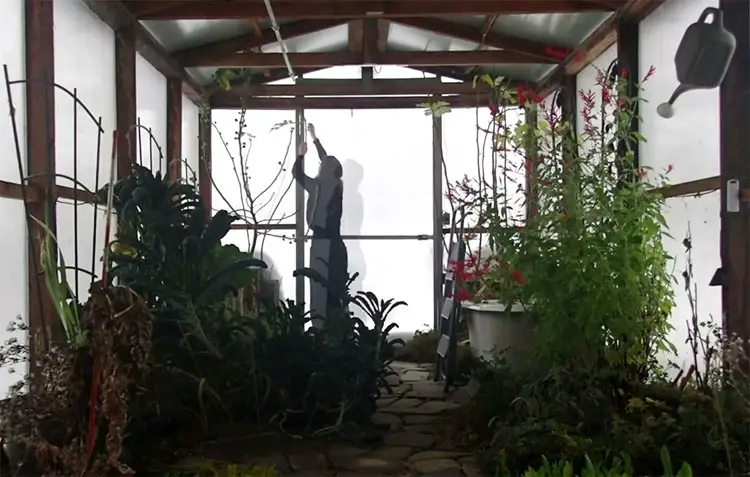As of now, there are many different “-arium” exist in the world. Apart from the most common aquarium, there are still many other “-arium” including the aquarium, terrarium, vivarium, riparium, paludarium, and many more. Do you know what the difference is between them?
Many people are having questions of what’s the difference between all these different enclosures. We have heard of these names that get tossed around.
So I think it’s good for you to know the difference between them because when you’re trying to design an enclosure, the type that you model will impact whether or not your animal will enjoy that enclosure or whether you’ve set it up properly.
If you are confusing as I did before, I would love to share the difference between them.
Aquarium
The most common “-arium” you’ve ever heard for sure would be the aquarium. The root that we are focusing on is the aqua. The word aqua is means water. So this type of “-arium” should be water-based, where the enclosure should be completely submerged in water. That’s what makes them an aquarium.
The aquarium is an enclosure that is used to raise fish. It is a container dedicated to keeping aquatic animals and plants for ornamental purposes. It is also an animal breeding area.
Usually, at least one side of the enclosure is made of transparent glass and high-strength plastic. In the aquarium, plants and fishes that live in the water are freely growing inside. Other than fish, an aquarium also can contain invertebrates, amphibians, marine mammals, or reptiles.
For aquariums, you can actually find a lot of variations. They are available to raise small fish to big fish, from one fish to many fishes.
Some people think an aquarium means there is fish inside the enclosure. Well, this isn’t quite correct. The fact is that it is filled with water. So if you fill a tank with water and include some animals and plants, you are having yourself an aquarium.
The focus here is on the water, so you should have 100% water in this type of setup.
Terrarium
This one can say to be the opposite of an aquarium. The root of this terrarium is “terra.” “Terra” means earth or land, and so it is opposite to an aquarium.
A terrarium should be completely dominated by land. So there should be no water features in the enclosure. The thing that makes a terrarium a little different is because it is focused on land. Therefore, you should only have plants and soil in this type of setup.
A terrarium is supposed to be planted only. If you set up something like an iguana or snake and make the enclosure look like a forest, you can no longer say it is a terrarium. Because technically it is not as remember what we just discussed earlier, the terrarium should contain plant only.
A terrarium can mimic the natural ecosystem of the earth. It is designed in such a way as the bottom of the earth, with many rocks. On top, there is a water bed and soil bed.
There is sunlight, oxygen, and carbon dioxide in the air, water, nutritious soil in the terrarium. This makes the plants feel comfortable staying inside.
You can place things like coconut husk for filtration. You can also put in activated charcoal to absorb the nitrogen and other gases. This will help to keep the air clean. Peat moss or mud is ideal stuff to put in the terrarium.
Vivarium
If you had a mostly forest type of setup where you added an animal besides the plants, we should call this enclosure a vivarium. Viva means living or alive, and the key difference between vivarium and terrarium is terrarium contains plants only, but the vivarium is contained plants and animals.
So vivarium has a living element, and people tend to think of it when they hear vivarium. They think like a moist kind of rainforest look.
By definition of Bavaria, it is something that includes plants and animals. So you could have a desert vivarium as well as long as you’re including living desert plants and a living desert native animal. You can still call it a vivarium.
So it’s a good practice when you’re searching for enclosure ideas. You can include what kind of tropical vivarium, desert vivarium, or somewhere in between into your idea.
Common stuff required to make a vivarium enclosure are driftwoods, cork tile, peat pots, black lava rock, landscape fabric, charcoal, and substrate mix.
Ideal plants for you to put in your vivarium are peperomia obtusifolia, nerve plant, pothos, wandering jew, philodendron scandens, maranta. These plants are ideal for putting in your enclosure because they are easy to grow, easy to take care of and require low light.
You can add silicon with no mold inhibitors to it because this will make it easier to stick. This type of silicone is safe for your reptiles and amphibians.
Paludarium
This is the lesser-known type of setup. However, paludarium has become more and more popular lately. The main thing for this “-arium” to get its name is that it includes a predominant water feature of some kind.
The root of paludarium is Paulo. And Paulo actually means swamp. A paludarium should include about 80% plants, but you’re going to have a major portion of it, including water.
Paludarium is an aquarium that has terrestrial plants, aquatic plants, and aquatic life. A simple paludarium setup includes mosses and plants. At the bottom, it will feature some little pond area or a small aquatic area.
Paludarium is a trendy choice now because they include a water feature. This is great for fibula animals that require a lot of moisture. Salamanders and frogs are a great choice for a paludarium setup.
What I like about paludarium because once you set them up, there is not much maintenance you need to carry out. They are pretty much self-sustaining.
Some people won’t put any soil into their paludarium. What they do is they just let the roots go directly into the water so that the plants can get nourish from there. I love to put the plants and animals that won’t grow too fast. Because I don’t want to trim them every week. Ideally, I love to pick those plants that require low light and fish that won’t grow big, like the Boris Maculatus.
Riparium
I’m starting to see this, especially the deeper you go under research. You’ll start to see this one pop up, and the name for this one is a riparium.
Ripariums are very cool because you are adding more water to this type of setup. The root of riparium is ripe, which means coastal or bank such as river bank. Therefore, it is also known as a riverbank aquarium.
What is supposed to contain in this setup is more similar to the aquarium setup, but with a little land. So it’s like a reversed paludarium where it should have 80% water and 20% land. These are great fish aquatic setups.
If you like the aquarium scape but are looking for something a little different, you can consider the riparium because most of it is water.
General stuff required for setting up a riparium includes tank, substrate, filtration, lighting, heating, and plants.
Where choosing the plants for riparium, you should choose marginal aquatic plants. These are plants that are adapted to grow in very wet places. There tend to grow at the edge of the river or in bog areas. Some easy plants for riparium are Cyperus Dwarf Umbrella Sedge and Acorus Japanese Sweetflag.
Solarium
The last “-arium” that I want to talk about. I know there are tons of “arium” out there, but when we start to get into an idea of “-arium” used mechanically for production or religious regions.
If you focus on the “arium” for animals, you will need to know what solarium is all about. Solar means sun, so solariums are really just rooms for sun where there will be no plant, animal, and water but just sun.
A solarium is actually a fancy term for a sunroom. Some people build a sunroom by raising a few animals for them to enjoy.
Many projects are dealing with solarium running around the world. Generally, one of the processes of making the sunroom is to ensure the sunlight can pass through the glass and reach the entire room area. Besides, it also needs to ensure that it will contain the heat in the solarium.
Therefore, we can say solarium is actually an environmental style of enclosure.
Bioactive
A keyword will also pop up when you are looking for enclosure styles, and that word is bioactive. This is without the “-arium,” but why do I want to bring it up here?
I’m going to use the vivarium as my example because that’s probably the lowest enclosure step. After all, terrariums don’t include animals.
As you should know by now where vivariums are enclosures that contain plants and animals. But they are not considered bioactive. The keyword bioactive means you’re trying to create a functioning biological ecosystem cycle.
To do that, you will need to have an animal that is giving off the waste. At the same time, you have plants that absorb waste. They also put off oxygen and hold moisture.
However, you will not have the complete cycle because plants do not necessarily absorb the waste as they take it in broken-down forms, which is why we need to use fertilizer.
To convert your animal’s feces into fertilizer for the plant, you need a cleanup crew. This is where the bugs come into play. Bugs like isopods or springtails are the ideal cleanup crew that you can have.
Other than these, some people include things like centipedes, beetles, worms, and roaches into their bioactive enclosure.
You can keep many different bugs into it, but keep in mind that you want a bug that can get rid of something or bugs that can help break down mold, fungus, feces, and all the nasty stuff.
I am a huge advocate for bioactive, and all of my enclosures are bioactive.
What makes me a huge advocate for bioactive is because it keeps my tanks cycling, and I actually don’t have to clean it.
Any feces that get dropped down into the soil or automatically cleaned by those insects and then the insects that the plants will absorb poop out the fertilizer, which helps them grow.
In return, the plants will give off more oxygen and retain more moisture because their root systems are stronger.
Some people may feel uncomfortable having bugs or insects in their enclosure, but I strongly encourage you to put them in your enclosure.
You shouldn’t worry much as you won’t see them and they don’t get out. They do their own thing under the ground in the substrate, and they clean up everything.
However, it would help if you remembered that you need to set up your enclosure and house everything. This is because it is one cycling ecosystem.
So you need to make sure your substrate is something that the animal and plants can live on. Don’t put paper towel as it will not work for bioactive. Also, don’t put in any carpeting as this stuff is not bioactive.
Once again, I would highly recommend you go for bioactive because it is really the way to go no matter how you set it up. You can just do bioactive for your aquarium, terrarium, vivarium, paludarium, riparium, and solarium. As long as they are bioactive, you are good to go.


